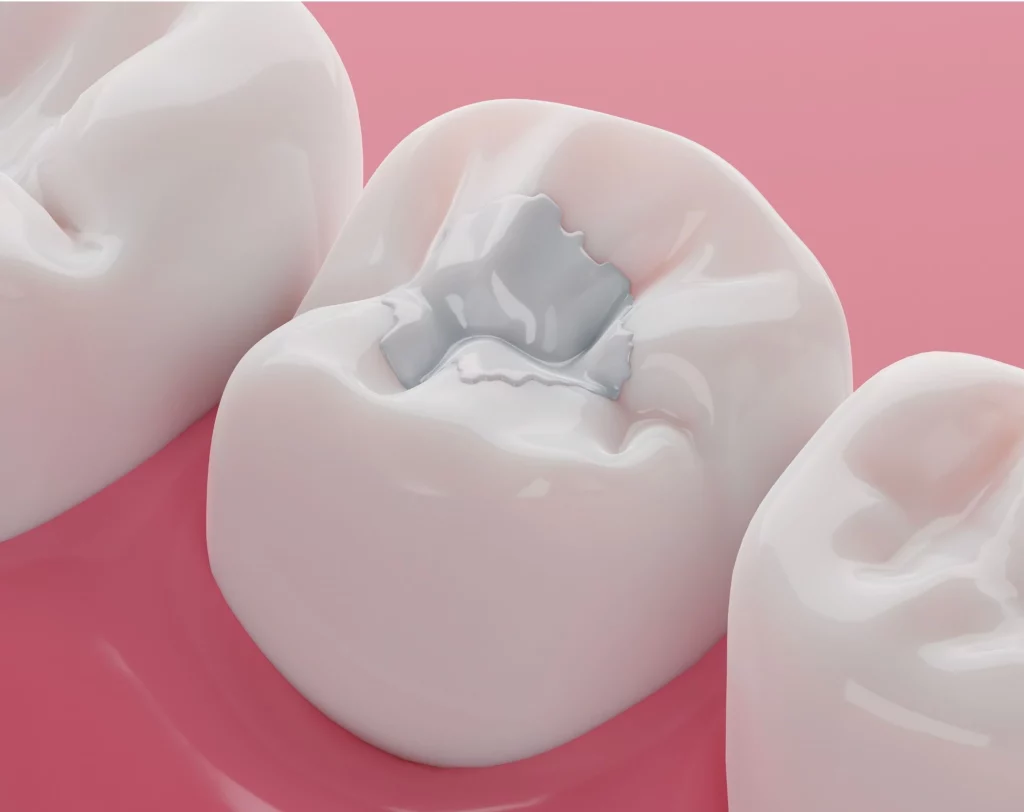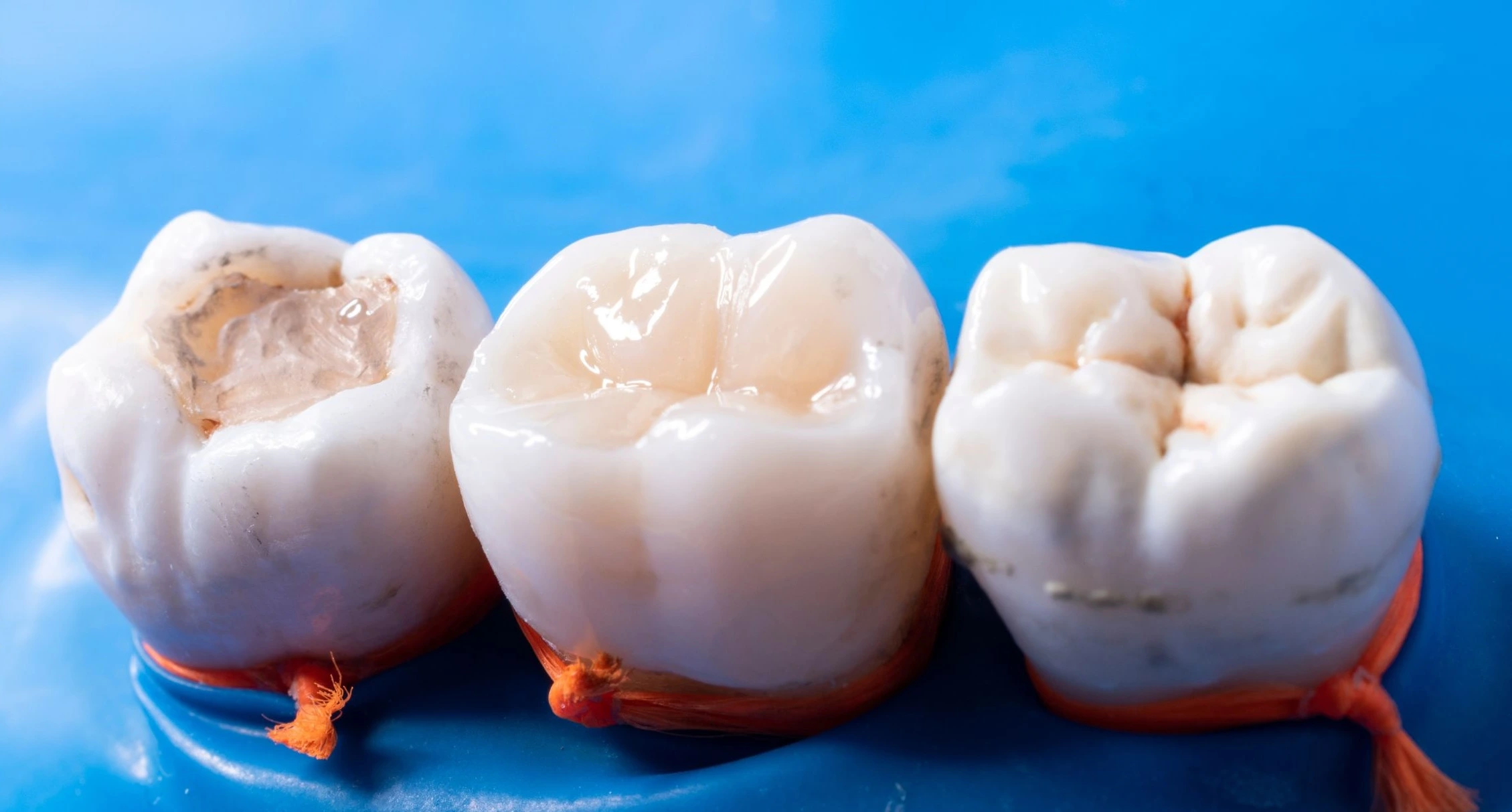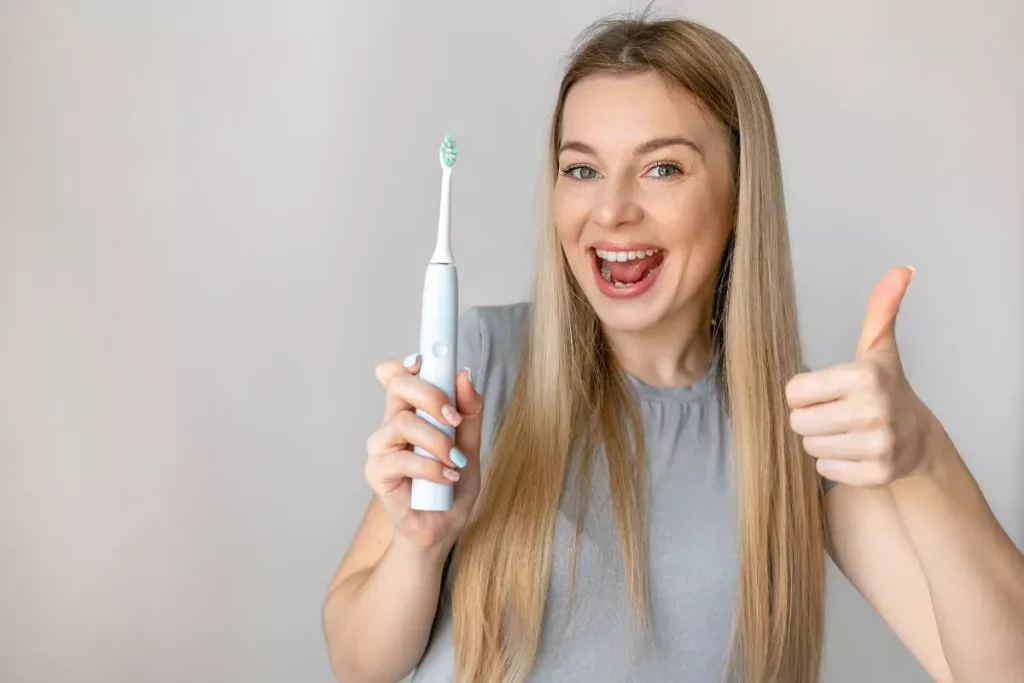Over the years, in the field of dentistry, efforts have been made to maintain adequate oral health, which includes restoring function and shape to teeth that have suffered cavities or fractures. For this purpose, various materials have been used to cover or fill damaged teeth: amalgam fillings, ceromer, glass ionomer, ceramic, and composite fillings, among others.
For more than 100 years, silver amalgams (gray shims) were the fillings of choice, due to their hardness, resistance, and long life; but over time, new materials have been developed, similar to natural teeth, and that fulfill an excellent restorative function, including composite resins.
How much does it Cost to Perform a Resin Restoration?
In this article you will obtain information about the most common dental filling today: the composite resin. You will learn the composition, advantages, disadvantages, and care needed to prolong the useful life of these materials.
What are Composite Fillings?
They are dental fillings made of a plastic material called resin, combined with an inorganic component that acts as a filler mineral; this can be quartz, silica, or zirconium, among others.
They are used to restore lost or damaged areas of a tooth; for example, when there are cavities, or it has suffered trauma or a fracture. They are also widely used as veneers to improve dental shape, color, and aesthetics.
Advantages of Composite Resins
The most common advantages compared to amalgam fillings are:
Color and aesthetics
The resins closely resemble the natural color of the teeth. They present a wide range of colors, as well as transparent and opaque shades, allowing for highly aesthetic restorations, in which the difference between a natural tooth and the resin is not noticeable.
Texture
Composite fillings provide exceptional polish. The restorations are smooth and thus better cover the damaged area of the tooth.
Accession
The resins allow for further preservation of the dental structure, that is, in the area where the cavity is found. It is not necessary to damage a large part of the tooth for the restoration to be retained (as in the case of amalgams). The dentist just removes the decay and glues the resin into the cavity.
Resistance and flexibility
The properties of the resin are similar to those of the natural tooth. Amalgam fillings are usually so hard that it is very likely that if a tooth is fractured, the restoration remains intact; On the other hand, when biting into something very hard or due to wear and tear over time, it can become misaligned or fractured, while the natural tooth remains almost intact.
Disadvantages of Composite Fillings
Among the most common disadvantages:
• Durability: Composite fillings, when well cared for, can last between 7 and 10 years, while amalgams last up to 50 years in the mouth.
• Hydrophobic: Composite fillings cannot get wet while they are being made; otherwise they do not adhere to the tooth. In short, humidity must be controlled.
• Longer working time: It is faster to make an amalgam than a resin since the latter requires a special technique to work.
• Cost: It is more costly to perform composite fillings than an amalgam.
What is the Procedure for Placing Composite Resins?
Generally, resins are placed during one appointment. The dentist will remove the dental caries, and make a small erosion on the tooth to achieve greater adherence. In some cases, when the cavity is very deep, anesthesia may be required.
If the cavity is close to the nerve, a special material is placed at the bottom, which acts as a protector for the nerve; then, the resin is added, little by little, in small quantities. It hardens (polymerizes) with the help of an LED light.
Finally, the restoration is polished.
It is normal to experience increased dental sensitivity when placing a resin for the first time, but the discomfort will disappear as the tooth gets used to the new restoration.
The placement of composite fillings requires a specific technique or protocol from the dentist; if it is altered, the resin can be misaligned or easily dislodged.
Are Composite Fillings Safe for Health?
Among the components of resin is Bisphenol A or BPA, a chemical substance used to make some plastics. Studies suggest that this material is harmful to health since it alters the functioning of the endocrine system; however, at very low levels, such as in resins, it does not cause any inconvenience.
Some people are also concerned about the light used to harden the resins: it may create risks. However, not many studies address the subject; For this reason, it is suggested to follow the manufacturer’s instructions to the letter, regarding the intensity of the light, the distance, and the polymerization time.
Frequently Asked Questions
Are composite fillings a worthwhile option?
Composite fillings have the advantage of chemically bonding to the tooth structure, offering enhanced support. In some cases, less removal of tooth structure is necessary compared to amalgam fillings when addressing decay and preparing for the filling. Preserving as much of the natural tooth as possible is always beneficial, making composite fillings a valuable choice.
What are the facts about composite fillings?
5 Key Points About Composite Fillings: Composite fillings are crafted from metal-free composite resin, making them a suitable choice for individuals with metal allergies or those seeking to avoid metal-based dental fillings. The absence of metal in composite fillings also prevents the surrounding tooth structure from discoloration due to corrosion.
What are the potential risks associated with composite fillings?
Composite fillings can pose a risk if they contain Bisphenol A (BPA) or other toxic substances. As these fillings naturally wear down over time, there is a possibility of toxic materials from the composite blend seeping into the oral cavity.
Do the majority of dentists use composite fillings?
In the past, silver amalgam fillings were commonly used and often considered the preferred choice by patients. However, nowadays, most dentists prefer to utilize composite resin as the primary material for dental fillings.
Share:
References
1. Alcaraz , M. J. , Veitz-Keenan , A. , Sahrmann , P. , Schmidlin , P. R. , Davis , D. O. , & Iheozor-Ejiofor , Z. (2014).Direct composite resin fillings versus amalgam fillings for permanent or adult posterior teeth. The Cochrane library. https://www.cochranelibrary.com/cdsr/doi/10.1002/14651858.CD005620.pub2/full
2. Cavity Filling Costs in 2023 – With and Without Insurance. (January 3, 2023). Byte. https://www.byte.com/community/resources/article/cavity-filling-costs-2021-with-without-insurance/
3. Chan, K., Mai, Y., Kim, H., Tong, K., Ng, D., & Y, Hsiao, J. (2010).Review: Resin Composite Filling. Materials, 3(2), 1228-1243. https://doi.org/10.3390/ma3021228
4. Dental Health and Tooth Fillings. (Reviewed: October 31, 2021). WebMD. https://www.webmd.com/oral-health/guide/dental-health-fillings
5. García, G., Martínez, J, A., Celemín, A. (2011).Aesthetic properties of composite resins.International journal of dental prosthetics. Vol 13, No 1, 11-22. https://www.elsevier.es/es-revista-revista-internacional-protesis-estomatologica-315-articulo-propiedades-esteticas-resinas-compuestas-X1139979111033003
6. Larson, J. (July 16, 2021). What You Should Know About Composite Fillings. Healthline. https://www.healthline.com/health/dental-and-oral-health/composite-fillings
7. Restorative Dentistry. (Reviewed: February 2, 2022). Cleveland Clinic. https://my.clevelandclinic.org/health/treatments/10924-dental-restorations
8. Tooth-colored fillings. (2002). Journal of the American Dental Association, 133(8), 1143. https://doi.org/10.14219/jada.archive.2002.0342
-
Nayibe Cubillos M. [Author]
Pharmaceutical Chemestry |Pharmaceutical Process Management | Pharmaceutical Care | Pharmaceutical Services Audit | Pharmaceutical Services Process Consulting | Content Project Manager | SEO Knowledge | Content Writer | Leadership | Scrum Master
View all posts
A healthcare writer with a solid background in pharmaceutical chemistry and a thorough understanding of Colombian regulatory processes and comprehensive sector management, she has significant experience coordinating and leading multidisciplina...

















